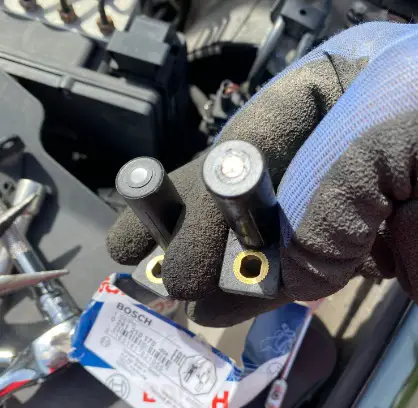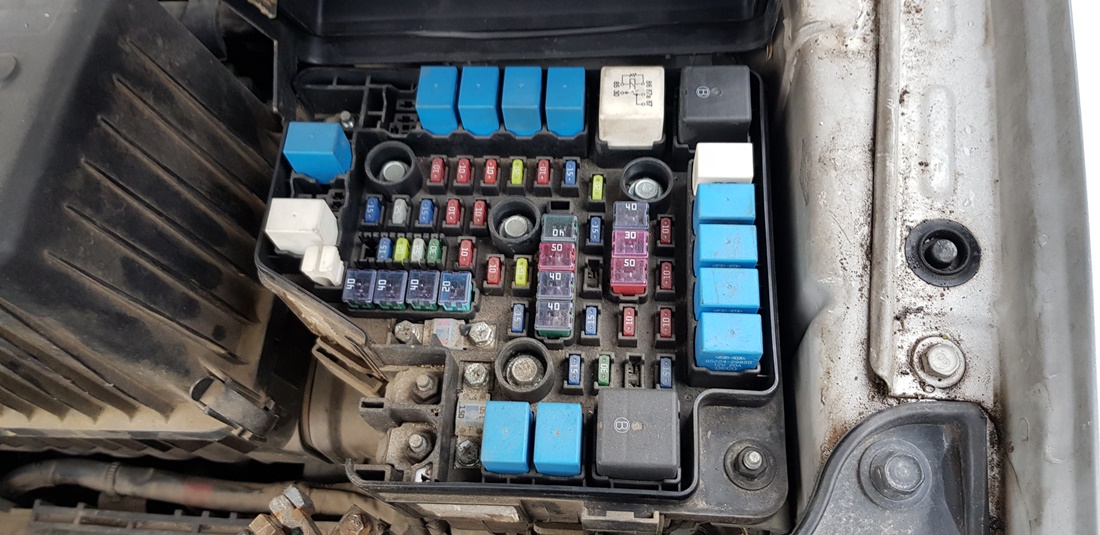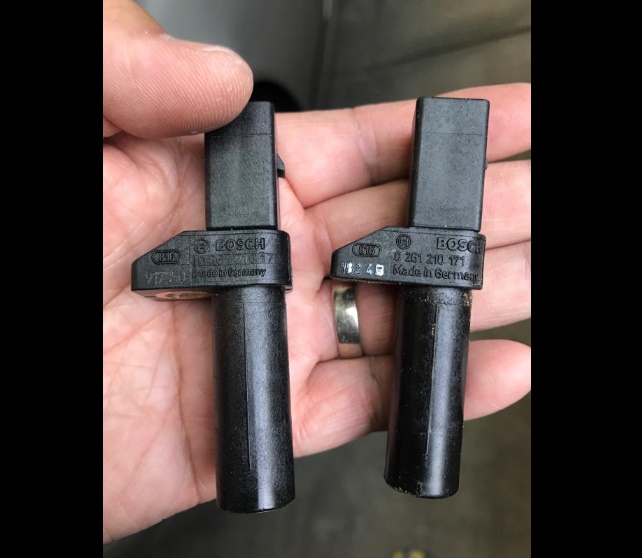A faulty fuel pump can cause you a lot of trouble. Depending on the vehicle model, replacing a faulty fuel pump can cost up to $1000.
This is because some models have their fuel pump attached to the fuel tank and then the entire rear suspension system under it.
So, if your fuel pump is faulty, is it safe to drive with a faulty fuel pump?
- Key Takeaway
- Is It Safe To Drive With A Faulty Fuel Pump
- Can I Drive With a Failing Fuel Pump?
- How Long Will a Bad Fuel Pump Last?
- How Serious is a Bad Fuel Pump?
- What Causes Damage To The Fuel Pump?
- Top 10 Signs Of A Faulty Fuel Pump
- 1. Vehicle won’t start
- 2. No buzzing noise during start-up
- 3. Jump-start the fuel pump by tapping
- 4. No power supply to the fuel pump
- 5. Faulty fuel pump relays
- 6. Fuel pump makes a whining noise
- 7. Vehicle stalls when accelerating
- 8. Vehicle stalling overall
- 9. Engine misfire
- 10. Vehicle sputter and surge at high speeds
- Can a Faulty Fuel Pump Cause High Fuel Consumption
- In Conclusion
Key Takeaway
- Driving with a faulty fuel pump is not considered safe. A malfunctioning fuel pump can cause unexpected drops in power or even completely shut the vehicle down, making it potentially hazardous to drive with this issue.
- A bad fuel pump can unpredictably fail at any time, but typically, a fuel pump should last for at least 100,000 miles before the likelihood of failure increases.
- A bad fuel pump is a serious issue that can lead to major performance and drivability problems, potentially causing unexpected power drops, complete vehicle shutdown, and even engine damage.
Purpose of Fuel Pumps In Cars
The purpose of fuel pumps in cars is to deliver a steady and controlled flow of fuel from the fuel tank to the engine.
The fuel pump is responsible for pressurizing the fuel system, ensuring that the engine receives the necessary amount of fuel for combustion.
It draws fuel from the tank and pushes it through the fuel lines, filters, and injectors, maintaining the required pressure for efficient engine performance.
Without a properly functioning fuel pump, the engine may experience fuel starvation, leading to poor acceleration, stalling, or even complete engine failure.
Is It Safe To Drive With A Faulty Fuel Pump

It is not safe to drive with a faulty fuel pump as it can lead to unexpected drops in power, engine performance issues, and potential damage to other parts of the car.
A faulty fuel pump can no longer supply the fuel system with constant fuel pressure and your vehicle won’t start, it can stall, or even completely shut down at any time.
Apart, from possibly doing damage to some engine components due to low fuel supply, your vehicle can shut down while you are driving on the highway which can be a safety issue.
Additionally, driving with a bad fuel pump could lead to damage to the engine and other parts of the car. It’s important to address this problem promptly to avoid causing more serious problems with your vehicle.
Can I Drive With a Failing Fuel Pump?
No, it is not safe to drive with a failing fuel pump. While there may be methods that allow you to start your vehicle with a bad fuel pump, these are only temporary and not recommended for long-term use.
A faulty fuel pump can lead to major performance and drivability issues with your vehicle. It can cause unexpected drops in power, completely shut down the vehicle, and even cause damage to the engine and other parts of the car.
If the fuel pump fails while driving, it can be sudden and unpredictable, potentially leading to dangerous situations on the road. Furthermore, a failing fuel pump could also be leaking, which presents additional risks.
How Long Will a Bad Fuel Pump Last?
Once you’ve exceeded 100,000 miles, the likelihood of fuel pump failure increases.
On average, a fuel pump should last for at least 100,000 miles, and some have been known to last for over 200,000 miles.
If a fuel pump is failing, it may still pump fuel but the vehicle may experience difficulty starting due to lack of pressure.
Before a fuel pump goes out, signs like the vehicle stuttering and stumbling, taking more cranks to start than normal, requiring multiple turns of the key before it will start, and excessive whine from the fuel pump may be observed.
Therefore, if you know your fuel pump is bad, it’s strongly advised to address this issue promptly to avoid potential risks and damages.
How Serious is a Bad Fuel Pump?
A faulty fuel pump is a serious issue and can lead to major performance and drivability problems with your vehicle.
It may overheat and inadequately deliver gas to the engine, causing it to run hot and turn off while on the road.
This could potentially cause your vehicle to start back up after overheating and shutting down, only to do the same thing a half-hour later. This scenario is a common sign of a bad fuel pump.
Moreover, a bad fuel pump could cause unexpected drops in power or even completely shut the vehicle down.
If your vehicle’s fuel pump cannot get gas from the tank to the engine, you will have trouble starting your car. The car will struggle to start and run because the pump cannot push enough gas through.
A worn pump loses its pressure and the engine is starved of gasoline.
What Causes Damage To The Fuel Pump?
- Contaminated Fuel: Dirt, dust, or other particles in the fuel can cause damage to the fuel pump over time.
- Running on Low Fuel: Frequently driving your vehicle on low fuel can cause the fuel pump to overheat and wear out faster, as the fuel acts as a coolant for the pump.
- Poor Electrical Connection: A poor electrical connection can cause the pump to work harder than necessary, leading to premature wear and tear.
- Using the Wrong Fuel: Using the wrong type of fuel for your vehicle can damage the fuel pump.
- Wear and Tear: Like all parts of a vehicle, the fuel pump can wear out over time due to regular use.
- Clogged Fuel Filter: If the fuel filter is clogged, the fuel pump has to work harder to pump fuel, which can lead to damage.
- Bad Relay: A bad relay can cause the fuel pump to run continuously, even when the engine is off, resulting in overheating and damage.
Top 10 Signs Of A Faulty Fuel Pump

A faulty fuel pump will give away some signs that even an untrained mechanic can notice and diagnose. All you have to do is listen to your vehicle. Here are the top 10 signs of a faulty fuel pump:
1. Vehicle won’t start
If your vehicle cranks but won’t start, there is a chance that the fuel pump is faulty. Because the vehicle cranks, you can rule out a faulty alternator and battery because there is a power supply to the vehicle.
You can spray starting fluid into the intake and try to start your vehicle. If you are able to start your vehicle with a starting fluid sprayed directly into the intake, that means that the fuel system is faulty.
2. No buzzing noise during start-up
The fuel pump has an electric motor built in. Every time you start your vehicle, the fuel pump makes a buzzing noise. In most vehicles, the fuel pump is located near the gas tank.
Have someone open the fuel tank cap and listen for a buzzing noise when you start your vehicle. If there is no buzzing noise coming from the fuel pump, that means that the fuel pump is no longer operational.
3. Jump-start the fuel pump by tapping
Since the fuel pump is operated by power, it could have some loose wire. You cannot get to the fuel pump without removing some parts. But, since the fuel pump is attached to the fuel tank, you can use a rubber mallet or a two-by-four and tap on the fuel tank.
Try tapping softly so you don’t damage anything. You just want to try tapping so you can start the fuel pump one more time. If the vehicle starts, it means that the fuel pump is faulty and you should take your vehicle to the repair shop to replace the fuel pump.
4. No power supply to the fuel pump
This can be done on a vehicle with an easy access panel to the fuel pump. Usually, the pumps are attached to the fuel tank and it would be hard to check the power supply without removing any parts.
Check for power going to the fuel pump using a voltmeter. If power is going to the fuel pump but your fuel pump isn’t starting or buzzing, the fuel pump is faulty.
5. Faulty fuel pump relays

You need to check all related fuel pump relays and see if they are faulty. The fuse box is usually located in the engine bay, on the driver’s side. However, there are many fuses and this can actually be very confusing if you don’t know what you are looking for.
Each fuse is assigned to a different part. You should check your manufacturer’s manual to see which fuses are assigned to your fuel pump. Take out the fuel pump fuses and inspect them for any damage. If you are uncertain about some fuses, just replace them with new ones.
6. Fuel pump makes a whining noise
A properly operational fuel pump makes a buzzing noise when it’s working. This noise is quiet but you can hear it if you are near the fuel tank. Once the noise changes from a normal buzzing sound into a whining noise, this is an indication that there is something wrong with the fuel pump.
A fuel pump will not just go bad in an instant. A fuel pump that is about to fail starts making whining noises. This noise is different from the buzzing noise. This is actually the first sign that a failing fuel pump gives.
7. Vehicle stalls when accelerating
When a fuel pump starts to fail, it is no longer working at full capacity. You are used to accelerating as soon as you hit the gas pedal. But, when the fuel pump starts to fail, you will notice the difference when you press the gas pedal.
Because the fuel pump is about to fail, it is no longer supplying enough fuel pressure to the fuel rail. The vehicle will stall even with you pressing the gas pedal. This is a clear indication that the fuel pump is failing.
8. Vehicle stalling overall
If your vehicle stalls when you are accelerating is different from your vehicle stalling even when you are driving your car normally. To accelerate, the fuel pump needs to supply the engine with more fuel. That requires the fuel pump to work twice as hard.
But, if you are driving your vehicle at a normal speed, but it is still stalling, this means that the fuel pump is not capable of performing its job even with no additional pressure added. You should replace your fuel pump as soon as possible.
9. Engine misfire
When a fuel pump is faulty, it provides low fuel pressure. The low fuel pressure can cause the fuel injector to spray less fuel which can cause a misfire. Before you check your fuel injectors, make sure that you check your fuel pump first.
10. Vehicle sputter and surge at high speeds
Another common sign of a faulty fuel pump is if your vehicle sputters and surges at high speeds. A faulty fuel pump struggles to deliver constant fuel pressure. The fuel supply is not constant either and there is not enough fuel for the combustion to occur constantly.
If you are driving at high speeds, that means that the system needs more fuel at a constant level. A weak fuel pump cannot supply the combustion chambers with a constant flow of fuel and your vehicle will start to sputter and surge.
It is not safe to drive with a faulty fuel pump because maybe you want to pass a vehicle and you are counting on your car to accelerate, but instead, it will sputter and you could end up in an accident.
Can a Faulty Fuel Pump Cause High Fuel Consumption
A faulty fuel pump could cause high fuel consumption, but this is not always the case. Usually, when the fuel pump is faulty, there is not enough fuel supply to the engine. Meaning, a faulty pump cannot provide a constant fuel pressure and your vehicle will start to stall while accelerating, sputter at high speeds or it won’t start at all.
What Happens If You Keep Driving With a Bad Fuel Pump?
Continuing to drive with a bad fuel pump can lead to various consequences such as frequent stalls, loss of power during acceleration and highway speeds, and even complete engine failure.
Driving with a faulty fuel pump can result in unexpected drops in power, difficulty starting the vehicle, and potential damage to the engine.
It is important to address issues with the fuel pump promptly to ensure the proper functioning of the fuel system and maintain the safety and performance of the vehicle.
How Much Does It Cost To Replace a Fuel Pump?
The average cost for a fuel pump replacement ranges from $504 to $1,226.
The parts cost of a fuel pump typically falls between $75 and $250.
Labor costs can range from $150 to $300.
It’s important to note that these are average estimates and the actual cost may vary based on individual circumstances.
FAQs
Q: What are the symptoms of a bad fuel pump?
A: The symptoms of a bad fuel pump can vary, but some common signs include engine sputtering, difficulty starting or stalling, loss of power while driving, and unusual noises coming from the fuel tank. If you experience any of these symptoms, it is recommended to have your fuel pump checked by a professional mechanic.
Q: Can a car start with a bad fuel pump?
A: In some cases, a car with a bad fuel pump may still start, but it may exhibit poor performance and may not run smoothly. However, it is not recommended to drive a car with a bad fuel pump, as it can lead to further damage to the engine and other components.
Q: How long does a fuel pump last?
A: The lifespan of a fuel pump can vary depending on several factors, such as the type of fuel pump, the quality of fuel used, and the driving habits of the vehicle owner. On average, a fuel pump can last between 50,000 to 100,000 miles. However, it is important to note that a fuel pump can fail prematurely due to certain conditions or issues.
Q: What happens when a fuel pump goes bad?
A: When a fuel pump goes bad, it can result in a variety of problems. These can include fuel delivery issues, such as insufficient fuel reaching the engine, inconsistent fuel pressure, or no fuel flow at all. This can lead to poor engine performance, stalling, or an inability to start the vehicle.
Q: Can I drive with a bad fuel pump?
A: It is not recommended to drive with a bad fuel pump. Operating a vehicle with a faulty fuel pump can cause damage to the engine, and it may leave you stranded if the pump fails completely. It is best to have the fuel pump repaired or replaced as soon as possible to ensure safe and reliable operation of your vehicle.
Q: What are the signs of a bad fuel pump?
A: Some common signs of a bad fuel pump include engine misfires, loss of power, decreased fuel efficiency, difficulty starting or stalling, and unusual noises coming from the fuel tank. If you notice any of these symptoms, it is recommended to have your fuel pump inspected and repaired by a qualified mechanic.
Q: How do you replace a fuel pump?
A: The process of replacing a fuel pump can vary depending on the make and model of the vehicle. In general, it involves removing the fuel tank, disconnecting the electrical and fuel lines, and removing the old fuel pump. The new fuel pump is then installed, and the fuel tank is reattached. It is usually recommended to have a professional mechanic perform this task to ensure it is done correctly.
Q: Can a fuel pump failure result in low fuel pressure?
A: Yes, a fuel pump failure can result in low fuel pressure. The fuel pump is responsible for creating the necessary pressure to deliver fuel from the fuel tank to the engine. If the fuel pump is not functioning properly, it may not be able to maintain adequate fuel pressure, which can lead to various performance issues.
Q: What are the consequences of a failing fuel pump?
A: A failing fuel pump can cause a range of consequences, including poor engine performance, increased fuel consumption, stalling, and an inability to start the vehicle. It can also put additional strain on other components of the fuel system, potentially leading to further damage if not addressed promptly.
In Conclusion
In conclusion, if your vehicle has a faulty fuel pump, it is not safe to drive. Driving with a faulty fuel pump can cause the engine to stall or sputter and can lead to breakdowns or worse – an accident.
It is important to get your car checked out immediately by a professional mechanic as soon as you notice problems with the fuel delivery system.




